- Bookkeeping
- Financial Planning
- Animal Care
- Animal Science
- Dog Training
- Pet Grooming
- Veterinary Nursing
- Graphic Design
- Interior Design
- Photography
- User Experience Design
- Building and Construction
- Real Estate
- Business Administration
- Business Development
- Business Operations
- Change Management
- Customer Engagement
- Entrepreneurship
- Human Resources
- Leadership and Management
- Organisational Development
- Project Management
- Quality Management
- Small Business
- Supply Chain Operations
- Alcohol and Other Drugs
- Community Services
- Individual Support
- Education Support
- Training and Assessment
- Engineering
- Manufacturing
- Agriculture
- Conservation and Land Management
- Health Science
- Horticulture
- Social Science
- Sustainability
- Dermatology
- Eyebrow Specialist
- Eyelash Extension
- Hairdressing
- Nail Technology
- Allied Health
- Counselling
- Dental Assisting
- Health Administration
- Health Services Assistance
- Life Coaching
- Medical Administration
- Mental Health
- Natural Therapies
- Naturopathy
- Sports and Fitness
- Culinary Arts
- Event Management
- Hospitality
- Wedding Planning
- Cloud Computing
- Cyber Security
- Data Science and Analytics
- Programming
- Systems Administration
- Web Development
- Compliance and Risk
- Work Health and Safety
- Digital Marketing
- Digital Media
- Social Media Marketing
- New South Wales
- Northern Territory
- South Australia
- Western Australia
- Graduate Diploma
- Advanced Diploma
- Associate Degree
- Graduate Certificate
- Undergraduate Certificate
- Certificate
- Certificate II
- Certificate III
- Certificate IV
- Courses by Provider
- Government Funded Courses
- Student Hub
- The Workforce Training Hub
- Resumes Cover Letters

Complete List of 100 Resume Skills [For Any Job or Industry]
In this post, social skills, organisation skills, analytical skills, personal skills, leadership skills, other miscellaneous skills, 1. ensure you’ve reviewed every detail in the job description, 2. separate hard skills from the soft skills, 3. use bullet points.

In this post Show
When you’re writing a resume , there will come a time where you will have to list your skillset.
Resume skills fall into two categories: soft skills and hard skills. Soft skills are generally transferrable and can apply across many different industries. On the other hand, hard skills are more specific skills that rely on specialised technical knowledge.
You will need both on your resume, but I will focus on 100 transferable skills , divided into distinct sections, that you can list on your professional resume. It will help you with your job search, and might just help you land a job interview.
The primary soft skill here is “written and verbal communication”. Other qualities in this area consist of:
- Teamwork skills
- Interpersonal skills
- Empathy/compassion
- Active listening
- Understanding body language
- Ability to quickly build relationships
- Team building
- Conflict resolution
- Reconciliation
- Customer service skills
- Positive attitude
- Proper business etiquette
- Capable of networking
- Capable of mentoring/teaching
- Ability to collaborate
- Capable of exchanging ideas
- Encourages other team members
- A sense of humour
- Client-oriented
Being organised is all about ensuring that you complete all of your work on time. The skills that can help you achieve this are as follows:
- Time management
- Decision-making skills
- Task delegation skills
- Flexibility
- Ability to multitask
- Punctuality
- Capable of meeting deadlines
- Capable of prioritising tasks
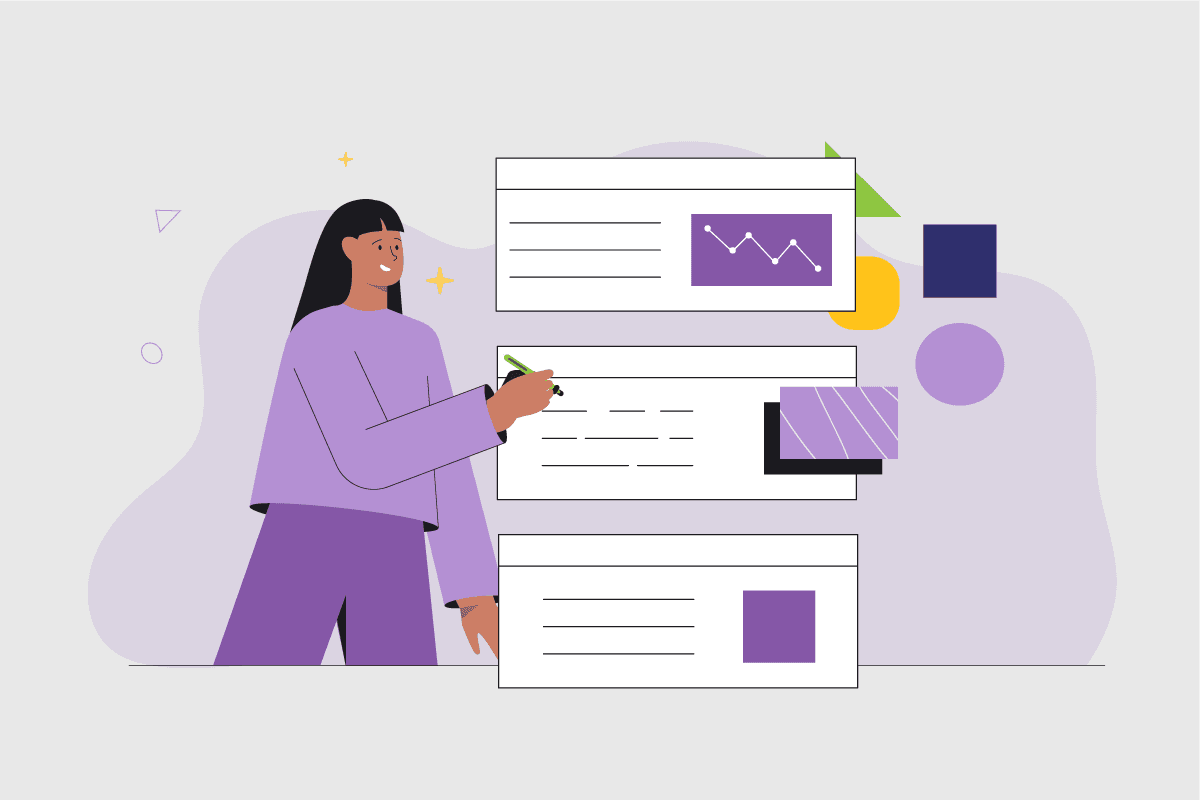
Need help answering key selection criteria?
Responding to selection criteria in a job advertisement can be tricky. Get the tools from this guide to do a top-tier job and nab the interview.
These skills revolve around your thought process and how you effectively reason.
- Problem-solving skills
- Creative thinking
- Critical thinking
- Quick learner
- Attention to detail
- Ability to brainstorm
- Inspiration
- Desire to experiment with new ideas
- Deductive reasoning (top-down thinking)
- Inductive reasoning (bottom-down thinking)
These are qualities that define you as an employer and team member.
- Introspection
- High energy
- Knows how to follow instructions
- A good work ethic
- Disciplined
The necessary skills if a person wants to become a successful manager .
- Adaptability
- Stress management
- Ability to negotiate
- Public speaking
- Trustworthiness
- Ability to handle criticism
- Control over emotions
- Presentation skills
- Capable of giving feedback
- Resourceful
- Determination
- Self-confident
- Responsible
- Self-management
- Open-minded
- Capable of questioning ideas
- Self-control
- Know when to take responsibility
- Independent
These skills don’t necessarily fit into a particular category but are sought after by many different employers.
- Physical endurance/stamina
- Computer skills
- Tolerant of change
- Aware of social issues
- Love to learn/curious
- Culturally sensitive
- A solid understanding of social media
Free Resume Templates: How to Write a Resume
Need some resume inspiration? Check out our ultimate resume guide .
As you’re writing your resume, take a look at the job description. What exactly are your potential employers looking for? Do you have the skills necessary for it? If you find that, ensure that you weave those skills in with the rest of your resume.
It’s not okay to flat-out lie in your resume. It’s more that, if you find that your skills line up with the skills listed in the job description, emphasise those skills more. If it’s not relevant to the job, don’t include them.
This isn’t required by any means. It is, however, helpful for your potential hiring manager when they’re reading through, and generally, makes your resume look more professional. You should place them at the top of your resume (just below your name details), and divide it into two columns, one listing down hard skills and the other consisting of soft skills.
This one is pretty self-explanatory. When you list your skills, bullet points are the way to go. Most employers are usually looking for keywords in the first place, so using bullet points will make their job a lot easier. Therefore, they are more likely to offer you a job interview. That doesn’t excuse you from being generic; ensure that the skills you include are specific with whatever the job description entails.
Need some resume inspiration? Check out our Ultimate Guide to Resumes for templates and examples.
Latest Articles
How to apply for work placement: tips & resources.
Congratulations! You’re about to embark on an exciting journey where you will practise and develop t...
11 Hobbies That Can Make You Money: Use Your Passion for Profit
Hobbies often get a bad rap. They’re seen as just a way to kill time, a mindless escape from t...

Is The Job You Hate Killing You? Why You Need to Make a Change
Do you hate your job? Studies show that staying in a job you hate has negative health effects and ev...

Want to read more?
Discover your leadership style: prepare for the next step in your career.
Identify your leadership style and learn about the skills you need to develop to successfully step i...

Jobs Where You Can Help People Who Are in Dangerous Situations
With job satisfaction high on the agenda , we take a deep-dive into two essential and meaningful car...
24 Most Fulfilling Jobs That Work With Kids: Which Is Your Calling?
Is working with kids your calling in life? Discover the 6 jobs working with children rated most fulf...
Subscribe to Our Newsletter
Get expert advice, insights, and explainers on tricky topics — designed to help you navigate your learning journey with confidence.
- Popular Subjects
- Qualification Type
- Courses by Location
- Business Admin
- Courses In ACT
- Courses In NSW
- Courses In NT
- Courses In QLD
- Courses In SA
- Courses In Tasmania
- Courses In VIC
- Courses In WA
Newsletter sign up
Newsletter sign up.
We’ll email you updates on job trends, career advice, study tips, news and more.
You are currently visiting our Australian website Training.com.au
Would you like to visit our New Zealand website instead?

Resume Tips Australia 2024 (+ Free Template)

Written by Nicole Wren
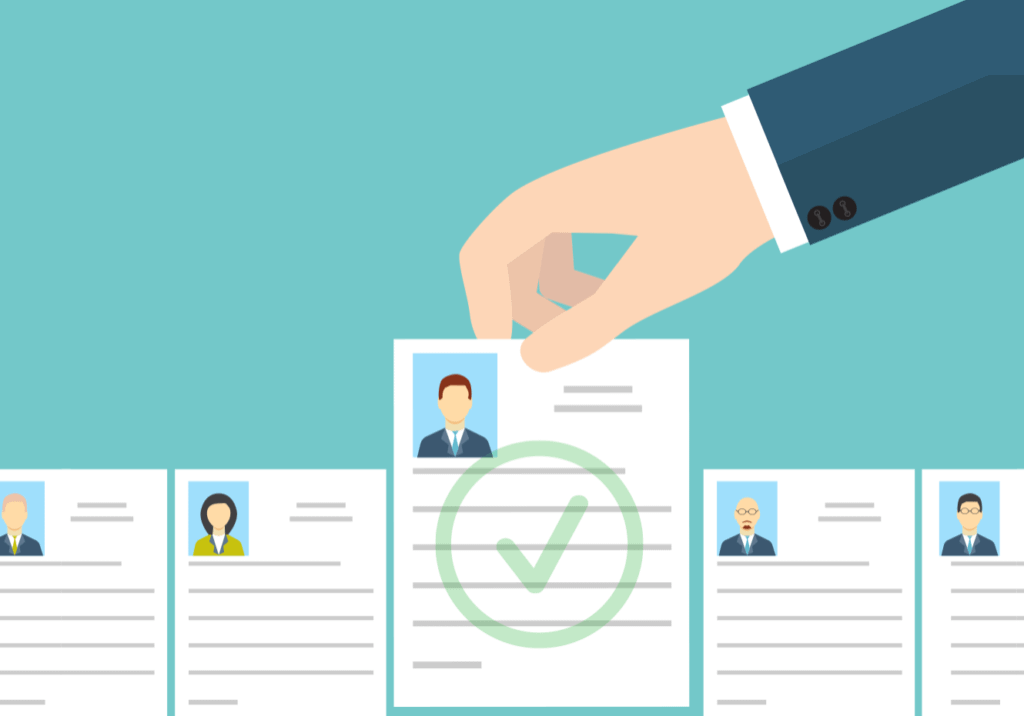
#ezw_tco-9 .ez-toc-title{ font-size: 120%; font-weight: 500; color: #000; } #ezw_tco-9 .ez-toc-widget-container ul.ez-toc-list li.active{ background-color: #ededed; } Table of Contents Toggle Table of Content Toggle
by Nicole Wren | Jan 22, 2024 | Writing Advice
Why a Good Resume (and Cover Letter) Matters
A quality resume (and cover letter) can significantly impact your chances of securing an interview and ultimately landing the job you want. Time and time again we’re told that our resume and cover letter service has been key to someone getting the job they want.
Your resume and cover letter are your first introduction to a potential employer. Knowing how to effectively present your qualifications, experiences, and skills in your resume, and ensuring it is aligned with Australian resume writing standards, will help ensure that you are quickly deemed suitable for an interview, and potentially the role.
Resume Tips Australia for 2024:
Think of your resume as the “answer” to the job ad.
A well-crafted job ad outlines the company’s needs, expectations, and the qualities they seek in an ideal candidate. It asks the questions: “Who can meet our requirements? Who can fit into our team and culture?”
Your resume and cover letter should ‘answer’ each of these queries. Your qualifications, experiences, and unique attributes should directly align with the job’s demands.
The average recruiter spends less than six minutes looking at your resume before deciding whether or not to shortlist you – make it count.
For example, here’s a job ad for a Construction Project Manager, and what the candidate needs:
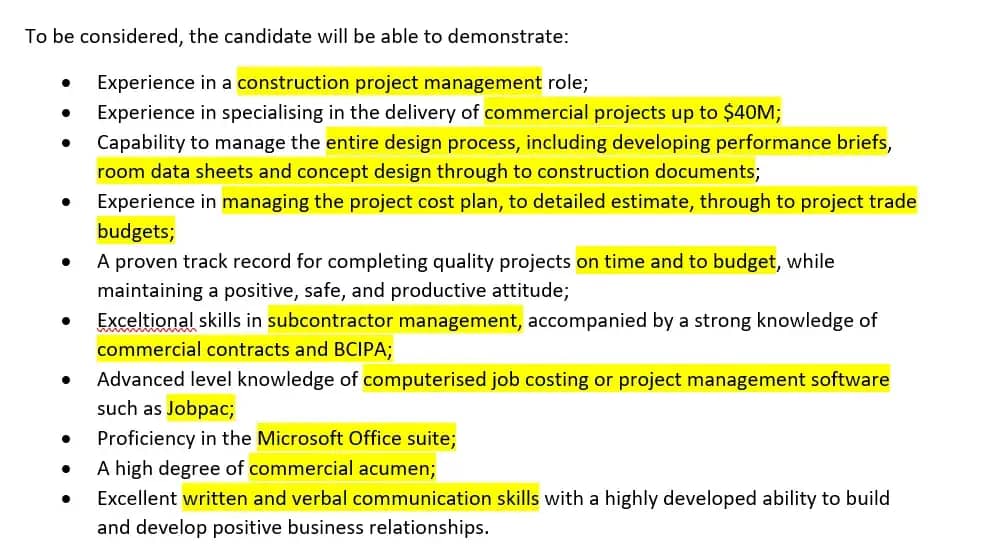
And here’s the first page of a Construction Project Manager resume, with highlighted sections reflecting the skills and experience required:
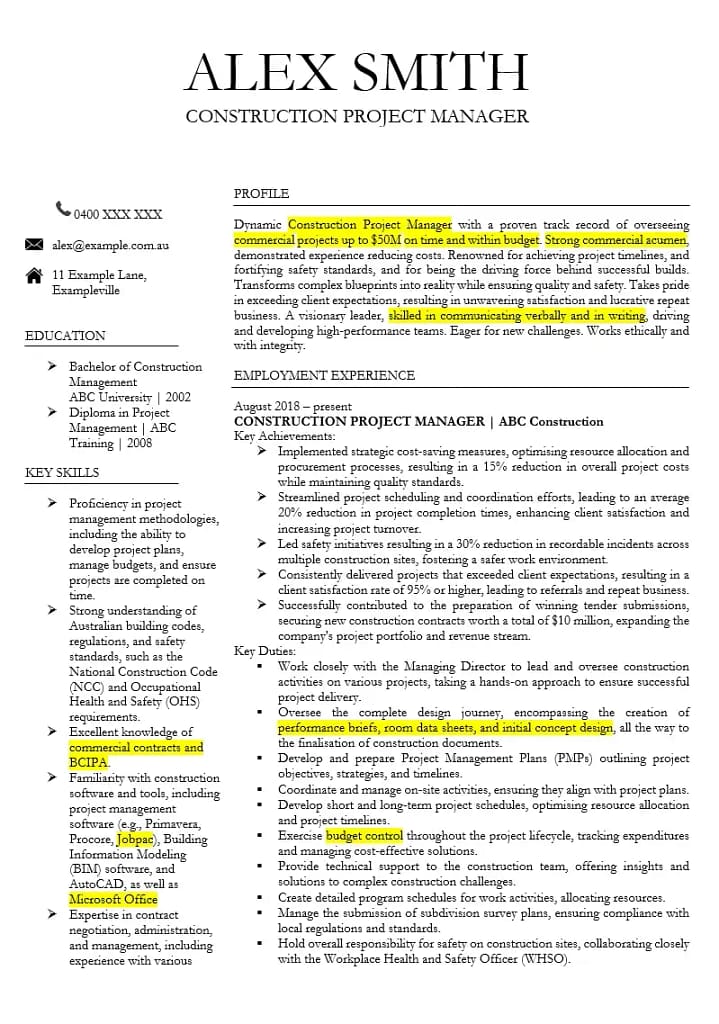
Use Quantifiable Results (Numbers and Metrics)
When you back your achievements and experiences with concrete numbers and metrics, you provide prospective employers with tangible evidence of your capabilities.
Here’s an example of a non-quantifiable result followed by a quantifiable one:
Non-Quantifiable: “Implemented a new customer service training program that improved team performance.”
Quantifiable: “Implemented a new customer service training program that resulted in a 20% increase in customer satisfaction scores within the first quarter.”
Some companies, like Google, even have specific ways they want you to structure your quantifiable achievements, such as Google’s XYZ Formula for resume achievements . If you’re struggling to come up with these achievements from your own career, here’s 50 accomplishments to put on a resume .
Ensure Your Documents Are Error-Free
Spelling, grammar, or formatting mistakes can create a negative impression. To stand out as a professional and detail-oriented candidate, it’s crucial to thoroughly proofread your documents, use grammar-checking tools, and, if possible, seek feedback from peers or professional editors. We offer a free resume review service .
Get Past the ATS Bots (But Don’t Spend Too Much Time Worrying About Them)
Successfully navigating the ATS (Applicant Tracking System) sounds harder than it is. The main thing is to review the job posting to identify keywords, skills, and qualifications mentioned in the description and integrate these in your resume.
This, as well as using an ATS-friendly resume design (i.e. one that can be easily scanned, without too many text boxes or images), are really all you need to do.
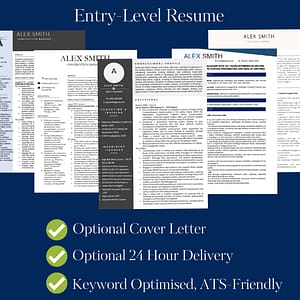
What is the Best Resume Format for 2024 in Australia?
The reverse chronological resume format remains the preferred resume format for job seekers in Australia in 2024. This is where you list your work experiences in reverse chronological order, with the most recent job at the top.
What Should I Include in my Resume Australia?
Your resume should include the following sections:
Contact Information: Begin your resume with your name, phone number, email address, and optionally, your LinkedIn profile.
Professional Summary/Objective: Provide a brief summary or objective statement that highlights your career goals and key qualifications. This section is optional but can be beneficial when it reflects the details of the job ad you are applying for.
Key Skills: Include a section that showcases your core skills and competencies relevant to the job you’re applying for.
Work Experience: List your relevant work experiences, starting with your most recent position and working backward. For each job, include your job title, company name, dates of employment (include months you started and left e.g. January 2021 – December 2023) and detailed bullet points highlighting your accomplishments and responsibilities.
Education: Mention your educational background, including degrees, institutions, graduation dates, and any relevant certifications or additional coursework.
Additional Sections: Depending on your field and the job you’re pursuing, you may include sections for certifications, awards, publications, projects, volunteer work, or professional memberships.
References: Instead of listing references on your resume, simply state, “References available upon request.”
How do you list skills on a resume in Australia?
In many Australian resume templates, key skills are often included on either the left or right column of the document. Alternatively, they can be listed at the beginning, following the professional summary or objective statement, or at the end, just before the education or references section. The list should be concise (aim for 5-10 key skills), and aligned with the job you’re applying for.
How far back should a resume go Australia?
In Australia, the general guideline is to include your most relevant and recent work experience, typically spanning the last 10 years. However, there can be variations based on individual circumstances and the specific job you’re applying for. For example, if you are making a career change and have some relevant experience in your new career from many years ago, you still might want to include this.
How many references should be on a resume?
On an Australian resume, unless the application guidelines specifically state you need to include the names and details of references, you can simply state “References available upon request.” Including references on a resume has become less common, and employers typically request them later in the hiring process, often during or after the interview stage.
Should I put hobbies on my resume?
Hobbies and personal interests are generally not necessary on a resume unless they directly demonstrate skills, qualifications, or experiences that are applicable to the job. In most cases, employers are more interested in your professional qualifications, work experience, and achievements. However, if a hobby is relevant to the position or can showcase transferable skills (e.g., leadership, teamwork, or creativity), you can consider including it.
What is the difference between a resume and a CV?
CVs are typically longer than resumes and can extend to multiple pages, depending on the candidate’s experience. They are comprehensive and include extensive details about a person’s academic and professional history. They are often used in academic contexts.
In Australia, it’s common to use the term “resume” or “CV” interchangeably for job applications in most industries. However, for academic or research positions, especially in higher education or scientific fields, the more comprehensive CV may be required.
How often should I update my CV?
Updating your CV every 2 years is a practical guideline, though the frequency may vary based on career milestones, skills development, job changes, and specific job search efforts. It’s advisable to refresh your CV whenever you achieve significant career goals or acquire new skills and accomplishments. Each job change or promotion presents an opportunity to update your CV to reflect your current role and responsibilities accurately. Periodic maintenance can prevent the need for major overhauls in the future.
How long should a resume be?
In Australia, the ideal length for a resume typically falls in the range of 2 to 3 pages, with exceptions based on individual circumstances. A concise 1-page resume is suitable for those with limited experience or entry-level positions, focusing on key qualifications. A 2-page resume is the standard for most job seekers, offering ample space to present work history, skills, and achievements thoroughly. In select cases, such as extensive experience or technical backgrounds, a 3-page resume may be justified, but it’s vital to ensure that all content remains relevant.

What NOT to include in your resume
- Irrelevant Personal Information: While your contact information is crucial, avoid including personal details like your date of birth, marital status, gender, or nationality, as these are generally considered irrelevant.
- Irrelevant Work Experience: Exclude work experiences that are not relevant to the job you’re applying for. Focus on showcasing the most pertinent qualifications and skills.
- Outdated qualifications or achievements: No need to include your high school awards 😉
- Details About Why You Left Your Previous Roles: Unless it was a very short role, and you want to explain your leaving for professional reasons (i.e. short-term contract only).
- Unrelated Hobbies and Interests: Unless they directly demonstrate relevant skills or characteristics, avoid listing hobbies or interests. These can take up valuable space without adding value.
- Unexplained Career Gaps: Explain any gaps in employment, including travel, study, renovations or caring responsibilities. Focus on the positives of what you achieved during these times.
- Salary Information: Do not disclose your salary history or salary expectations on your resume. This information can be discussed during the interview or negotiation phase.
- Photos: In Australia, it’s not customary to include a photograph on your resume, unless the job specifically requires it.
Do I need to attach copies of my qualifications to the resume?
In most cases, you do not need to attach copies of your qualifications to your resume. The employer will usually ask for these once you have been offered the position – you will need to provide them in order to be successfully onboarded.
2024 Resume Tips Australia: Trends – What’s New?
Ai resume writing (chatgpt).
The use of Artificial Intelligence (AI) in resume writing has become wide-spread. Even us professional resume writers have come to rely on these tools! However, we have also had numerous applicants come to us with a ‘ChatGPT resume’ that simply isn’t getting them to interview.
The trick is knowing what information to input into the AI, and a lot of that comes from the individual. While AI simplifies and streamlines resume writing, it is essential for job seekers to use these tools judiciously, ensuring that their unique qualities and experiences shine through in their applications.
Stating What YOU Can Do For The Employer
In some roles and industries, it is commonplace for an applicant to be asked to prepare goals for the company or to discuss their potential contributions at interview. This is most common in positions where strategic thinking, leadership, and a clear understanding of the company’s objectives are critical.
Offering this information within your cover letter can help you stand out amongst the pack. It’s something our resume writing team has had a lot of success with, and it’s a trend for 2024.
Here’s an example for an applicant applying for a Senior Marketing Manager role:
“As a Senior Marketing Manager, I would start by conducting a comprehensive market analysis to identify key customer segments and competitive opportunities. I would utilise my experience in data-driven decision-making to develop tailored marketing campaigns, harnessing the power of social media advertising and content optimisation to reach our target audience effectively. My goal would be to not only increase brand visibility but also to drive a 20% growth in lead generation within the first quarter of my tenure.”

Maintaining an ‘Achievement Bank’
An “achievement bank” is a collection of specific achievements and quantifiable results from your professional experiences that you can draw upon when writing your resume, cover letter, or during job interviews. Once you have a professional resume, it’s something that we recommend jobseekers do to make maintaining it easy.
The idea is that when you do something awesome at work, you open up your Word document/ Notes file etc. and make a note of it. Then, when you’re ready to apply for your next role, you simply open the achievement bank to make updating your resume a breeze.
Download FREE CV Template
I hope these resume tips Australia have been helpful.
Targeting government jobs specifically? Read how to write your resume for government job applications .

Nicole Wren
Senior Writer
Nicole is the principal resume writer at Resumes to Impress. Nicole loves writing and sharing her knowledge about all things job hunting and career guidance.
Recommended Services:

Entry-Level Aged Care Resume and Cover Letter Template

Cover Letter Writing Service – Australian Private Sector Jobs
Professional resume and cover letter service – mid-career, senior professional & executive resume writing service.

Job Interview Coaching
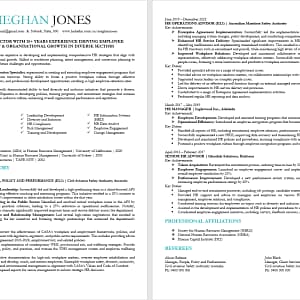
Government Resume Template
- Adelaide Resume Writers
- Resume Writers Bendigo
- Resume Writing Service Brisbane
- Resume Writing Services Cairns
- Resume Writing Services Canberra
- Resume Writers Darwin
- Resume Writers Diamond Creek
- Resume Writing Services Geelong
- Resume Writing Services Gold Coast
- Hobart Resume Writers
- Resume Writers Launceston
- Resume Writers Mackay
- Melbourne Resume Writers
- Resume Writing Services Newcastle
- Resume Writers Parramatta
- Resume Writers Perth
- Resume Writers Sunshine Coast
- Resume Writers Toowoomba
- Resume Writing Services Townsville
- Resume Writers Wollongong
- Interview Coach
- LinkedIn Profile Writer
- Resume Writing Services For Veterans
- Mining Resume Writing Services
- Nurse Resume Service
- Professional IT Resume Writing Services
Protect your data
This site uses cookies and related technologies for site operation, and analytics as described in our Privacy Policy . You may choose to consent to our use of these technologies, reject non-essential technologies, or further manage your preferences.
- Resume and Cover Letter
- The Best Job Skills to...
The Best Job Skills to Include on Your Resume in 2024
15 min read · Updated on August 28, 2024

Crush your career by making sure you have the right skills for your resume
As a job seeker focused on career advancement, you know how important it is for your resume to deliver the right message to prospective employers – a message that shows you have the right qualifications for your desired position. To convey that narrative, you need to make sure you're including the skills employers are looking for in today's rapidly changing economy. But what are the right skills for your resume?
In this article, we'll examine some of the best skills for any resume by exploring 10 key skills prized by almost every employer. We'll also provide some tips you can use to identify vital hard skills you'll need for specific job roles.
Related reading : What Are Skills? (With Examples and Tips on How to Improve Them)
12 skills for your resume that employers will love to see
1. continuous learning.
The days of getting a job and simply punching in and punching out are over. If you want to get ahead, you need to embrace continuous learning. By improving your work-related skill set, whether it's soft skills or hard skills, you boost your chances of improving your career trajectory.
Employers love to hear that candidates enjoy learning because it's necessary in a business world where change and growth are happening at remarkable speed. Those who don't embrace learning new things will be left behind due to an inability to keep pace with advancements in their industry.
2. Time management
Time management has always been important, but with the growing acceptance of remote work and the need for many companies to do more with fewer employees, it's more important than ever. That means your employers have to trust that you can manage your time and get your work done without anyone looking over your shoulder. In today's age of smartphones, social media, and binge-worthy TV, you need to prove you can stay on task and target.
3. Decision-making
Everybody makes decisions, right? Not exactly. For some people, decision-making is excruciating; they struggle to see beyond all the questions. What if we make the wrong choice? Is it worth the investment? Will the team be on board?
Having the ability to assess the criteria in front of you and come to a conclusive decision on a regular basis, even if you're wrong once in a while, marks you as a person who gets things done. It also shows you're willing to take calculated risks when necessary – and that's a good thing, too.
4. Emotional intelligence
The ability to stay in tune with your own emotions and the emotions of those around you is more valuable than ever. The days of “leave your problems at the door when logging in to work” are gone. From acknowledging your own emotions to having empathy for the emotions of your coworkers and clients, emotional intelligence will help you be a “people person” even if you're not a natural extrovert. This is one of the new top skills for a job in the modern economy.
5. Change Management
As you know, things are changing faster than ever – and that can sometimes be difficult for some employees to accept. Having a knack for change management, whether that means handling changes on your own or helping guide whole teams to adapt to new paradigms, is a great way to make yourself an irreplaceable part of nearly any organization.
6. Project management
Understanding the full scope of your projects and being able to manage them – from concept and development to implementation and completion – is a vital work-related skill. Changes in the labor market can make it harder for management to keep tabs on every project, so having employees who are skilled at project management can make their lives easier. This is one of those critical skills that can also set you up to help others and possibly move into a management role of your own.
7. Cloud computing
The world is moving into the cloud even faster than expected, and companies need people who understand it and can work with it. By developing and leveraging your expertise in cloud computing, you can ensure your skill set is well-positioned for a continually evolving economy. Even if you're not a Programmer or Engineer, just having a solid understanding of the cloud and how it works can keep you ahead of the game.
8. Artificial intelligence
It's truly an AI age now, with robots and automation making their way into the job market . We not only want computers to do work for us, but we also want them to get smarter as they work. Like cloud computing, this is another skill that you don't necessarily need to master – but developing a solid understanding of AI can give you a vital edge in a difficult job market.
9. Leadership
Too often, job seekers who are not pursuing management or leadership roles simply ignore basic leadership skills on their resume. Many simply assume those skills only matter to employers if they're hiring new managers or leaders. Nothing could be further from the truth, however. The best companies rely on a culture of leadership to foster growth, productivity, and innovation. Those employers will always take note of resumes that highlight a candidate's strong leadership skills.
Those skills can include things like:
Relationship building
The ability to motivate others
Critical thinking
Negotiation
Conflict management
Employers understand that candidates with these skills can add real value to their teams, helping them become more focused, adaptable, and productive. In addition, companies that promote from within are always on the lookout for potential new hires who can grow into those leadership and managerial roles over time.
10. Communication
Obviously, employers also want to see job candidates who include strong communication skills on their resume. After all, every business relies on people who can convey and receive important information – whether it's taking orders, providing instruction to others, or interacting with customers, coworkers, and vendors. However, there's more to communication than just being able to speak in a clear and intelligent manner. Communication skills can also include abilities like:
Confident presentation
Providing and receiving feedback
Respectfulness
Awareness of body language
Responsiveness
Written communication, including reports, emails, and even social media
Active listening
Related reading : 11 Best Communication Skills for Your Resume (With Examples)
11. Problem-solving
Problem-solving can be one of the most important skills for your resume. This skill set is prized by employers in every industry, and for good reason. Every company experiences challenges from time to time – everything from changes in the economy to industry stress, interpersonal conflicts, and market pressures. Employers who hire and retain problem-solvers will always have an edge when it comes to meeting and overcoming even the most daunting challenges.
Strong problem-solving skills can include:
Observation and data gathering
Data and fact analysis to identify the source of any challenge
Ability to define the scope of the problem
Collaborating with others to brainstorm potential solutions
Using critical thinking to determine the best possible solution
Creative planning to devise workable options for implementing the best solution
12. Transferable skills
It's also important to remember that employers will also prize skills that they may not have even thought to list in their job description. These abilities can include so-called transferable skills – typically soft skills that are important assets for nearly every job, company, and industry.
In addition to obvious abilities like communication, transferable skills can include talents and traits like a solid work ethic, integrity, and punctuality – characteristics that employers tend to associate with dependability. Flexibility and organizational skills are also great examples of abilities that are useful in almost any type of job. Other examples include technological literacy, self-motivation, and goal management.
How to identify skills to put on your resume
Of course, it's one thing to know which skills you possess; it's quite another to know which skills any given employer might be looking for during their hiring process. To truly stand out from the competition, you need a resume that includes all of the key abilities and qualifications your prospective employer expects their new hire to possess. But how do you identify those skills to make sure your resume is tailored to the role you're seeking? The following tips can help you organize your skill list.
Start with the job description
Your search for relevant skills should always begin with the role's job description. This simple description of the job's required qualifications will invariably include the most important skills the employer requires for the position. For example, if you are applying for a position as a Marketing Manager, a review of that role's job description may reveal the following duties and areas of responsibility:
Leadership of the company's marketing initiatives and teams
Collaboration with other departments, including financial and sales teams
Training of marketing personnel
Analysis of current campaigns to identify areas of potential improvement
Optimization of online marketing tools and campaigns
Brainstorming with leadership team to create new marketing and advertising ideas
Organization of promotional events
New product brand development, management, and revitalization
By analyzing that basic job description, you can identify an array of relevant skills that you should try to incorporate into various sections of your resume. When you dissect the bullets from this Marketing Manager job description, you'll find skills like:
Project management
Team leadership
Interdepartmental collaboration
Sales and marketing training
Data analysis
Problem-solving
Online marketing
Brainstorming
Promotions and event management
Brand development
Brand optimization
There are others, of course, but that should give you a good idea of just how easy it is to identify relevant skills for your resume by simply analyzing the company's job description. Note also that you should try to use the same terms you find in that description when you're creating your skill list. Those terms are likely to be keywords you'll need to include if you want your resume to get past the applicant tracking system.
Research the company
If your analysis of the job description doesn't provide you with a sufficient number of relevant skills for a resume, then you may be able to identify other qualifications by researching the company. You can find additional information about the company's culture, mission, vision, and job roles by reviewing its website and social media. You can even try to reach out to people who work there to see whether they can provide you with additional information.
By learning more about the company's culture and mission, you can identify key characteristics and values the employer is likely looking for in new hires. For example, if the company claims to value its customers, you may want to emphasize your own dedication to providing positive customer experiences. If the employer boasts of its innovative approach to service, you can highlight things like creativity and personal initiative in your resume.
Remember, the goal here is to ensure your resume skills align with the qualifications and character traits the company prizes. By tailoring your resume to fit the company's needs, you can more effectively stand out from the competition and capture the hiring manager's interest – which can help increase the chances that you get scheduled for that all-important job interview.
Skills and career marketing
When it's time to apply for a new job, you'll need a stellar resume, cover letter, and LinkedIn profile. Each one needs to be optimized with skills for the job you're seeking.
Skills for your resume
The first thing almost all job seekers work on is their resume, and there's a very good reason for that. It has been argued that your resume is the most important financial document you'll ever own – without it, you won't be able to land the job that enables you to pay bills, go on vacation, or save for retirement. By taking the extra time to dissect each job description and get the relevant keywords you'll need for your resume, you'll start to stand out from the crowd.
You can weave relevant skill keywords into any section of your resume, including the resume headline, profile summary, skills section, and work experience achievements.
Your resume headline
The resume headline is a single line of text that goes right below your resume contact information. This text should include your desired job title, as well as some descriptive language that can showcase your skills and value. The headline should mirror the job description in a way that is creative and poignant. For example, instead of just listing the job title, Marketing Manager , you should create a more compelling headline that captures the reader's attention:
Dynamic Marketing Manager, Branding Expert, and Campaign Innovator
A hiring manager who reads that headline will likely want to read more of your resume to gain greater insight into your claimed expertise. Just make sure you back up those claims by including the right skills in your resume, along with notable work experience achievements that demonstrate how you used those talents to achieve measurable results for your employers.
Your resume profile summary
Your resume profile should be a summary of your key qualifications; it serves as the resume equivalent of a salesperson's elevator pitch. Here, you should use just three or four short sentences to highlight your experience in the role, key skills, and a notable achievement demonstrating value. As you tweak your profile summary with keywords from the job description, think about how your experience is related to those keywords and how you can showcase them in a way that impresses hiring managers.
Related reading : Resume Profile Explained (with Examples)
Your work experience section
When most job seekers are thinking about where to add skills to their resume, the work experience section may not be the first thing that comes to mind. After all, that section is designed to highlight your work experience – including details about your prior job titles, employers, and dates of employment. Where do skills fit into that equation?
As it turns out, this section can be a great place to highlight relevant skills the employer is looking for. Wordsmith the key phrases you find in the job description into the action-packed achievement statements you write to describe your experiences.
Expert tip: Avoid listing job duties you performed during your time in past roles; instead, you should add measurable achievements that highlight real accomplishments that created value for your old bosses.
You can include skill keywords in some of those achievements to really focus attention on your expertise. For example:
Developed and implemented online marketing campaign that boosted customer social media interaction by 230%, contributing to a 27% increase in online sales activities
Created new sales and marketing training program for new employees, increasing onboarding efficiency by 52%
Collaborated with sales team leaders to align on-site sales efforts with company's new marketing campaign, resulting in 23% increase in company-wide quarterly sales
As you can see, each of those achievement statements includes details that highlight specific skills used to achieve positive results for the candidate's employers. When hiring managers read those achievement statements, they'll immediately recognize the type of value that the job seeker can provide for their organization.
Related reading : 47 Accomplishment Examples for Your Resume: Expert Picks
Your skills section
As you add skill keywords to those sections of your resume, you can cross them off your master list. Whatever remains on that list can form the foundation of your resume's skills section. This section should be a list of between nine and twelve key abilities – including both hard and soft skills listed in the job description, as well as any relevant transferable skills. This list is a vital way to ensure your resume gets past the applicant tracking system (ATS) employers use to screen applicants.
Related reading : Seven Key Resume Sections and How to Organize Them
Optimize your LinkedIn profile with keywords
Your LinkedIn profile is special and is ranked in recruiter searches based on keyword density, among other things. As recruiters search on LinkedIn for candidates to fill open roles, the profiles with the most relevant keywords will show up at the top of the recruiter's list. Now, you don't want to overdo it with the keywords, as that could be seen as keyword stuffing. But you do want to make sure you're using industry and job-specific keywords in a way that makes sense.
Don't forget the cover letter
Even with the rise of online resume submissions, cover letters remain an important part of the job search process – and one of the best ways for you to connect with employers. Don't just throw something together and call it a cover letter, though. Be diligent with keywords that match your skills, just like you are with your resume and LinkedIn profile. Put your creative hat on and align your experiences, skills, and achievements with keywords from the job description.
You are the best at what you do – don't let them forget that!
To compete in today's competitive job market, it's essential to be able to identify the best skills for your resume. Learning how to identify the skills employers want to see on your resume and knowing how to include them in a way that highlights your qualifications can help you increase your odds of earning an interview and job offer. By following the tips and examples in this guide, you should be well on your way to greater resume and job search success!
Are you updating the skills for your resume? Why not send it for a free resume review by the experts at TopResume, to make sure it's selling your job skills in the current labor market?
This article was originally written by Ken Chase and has been updated by Marsha Hebert and Ken Chase.
Recommended reading:
Top Transferable Job Skills Employers Look for in Candidates
Skills You Can Learn on the Job
Key Differences Between Hard Skills and Soft Skills
Related Articles:
How to Maximize Your Resume Action Words to Wow the Employer
Ask Amanda: Do I Really Need a Cover Letter?
7 Signs Your Resume is Making You Look Old
See how your resume stacks up.
Career Advice Newsletter
Our experts gather the best career & resume tips weekly. Delivered weekly, always free.
Thanks! Career advice is on its way.
Share this article:
Let's stay in touch.
Subscribe today to get job tips and career advice that will come in handy.
Your information is secure. Please read our privacy policy for more information.

IMAGES
VIDEO
COMMENTS
There’re plenty of resumé tips that will help you impress the hiring manager, but putting the right types of skills front and centre is crucial for securing your ideal role. Let’s take a look at creating a strong list of skills for a resumé to increase …
There are three key reasons to include the skills section in your resume and to organize it well: To list your skills and abilities in one place for easy reference and scanning. …
Top 5 Skills That Belong On (Almost) Every Resume. Australian employers expect you to showcase skills from every category below. Both hard and soft skills can be transferrable across multiple roles and industries — so …
Identify key skills and experiences that the employer values by studying the job description closely, and then adapt your resume for each application, emphasising different aspects of your experience or adjusting your …
Having trouble with the skills section of your resume? Here’s a complete list of 100 resume skills that you can use across all jobs and industries.
Key Skills: Include a section that showcases your core skills and competencies relevant to the job you’re applying for. Work Experience: List your relevant work experiences, starting with your most recent position and working …
In this article, we'll examine some of the best skills for any resume by exploring 10 key skills prized by almost every employer. We'll also provide some tips you can use to …
A transferable skills-based resume includes all the elements of a typical resume – profile, education, experience and contact information. But it makes your relevant skills more prominent. You might create a section under the title ‘Key …
Core competencies, also known as your ‘core qualifications’, is a list of your qualifications for a job. A core competencies resume section includes your skills, certifications, …